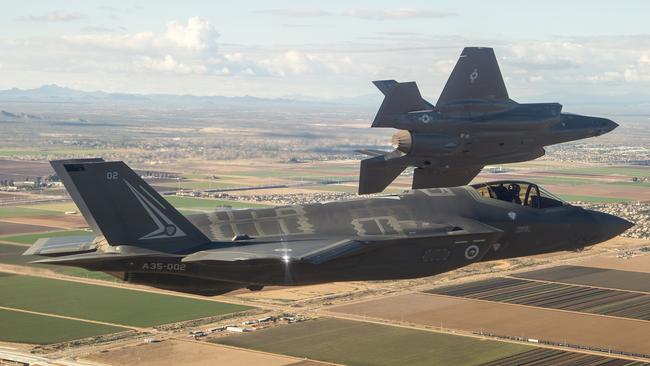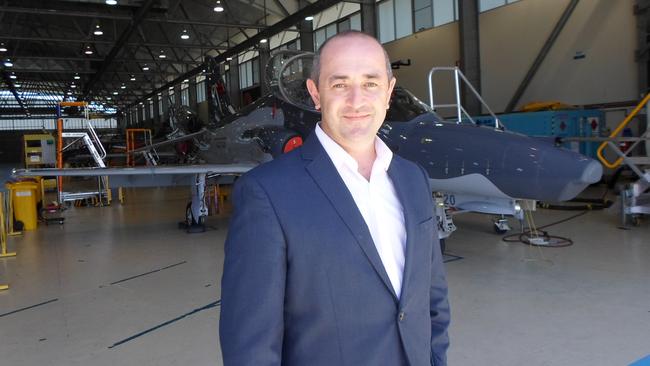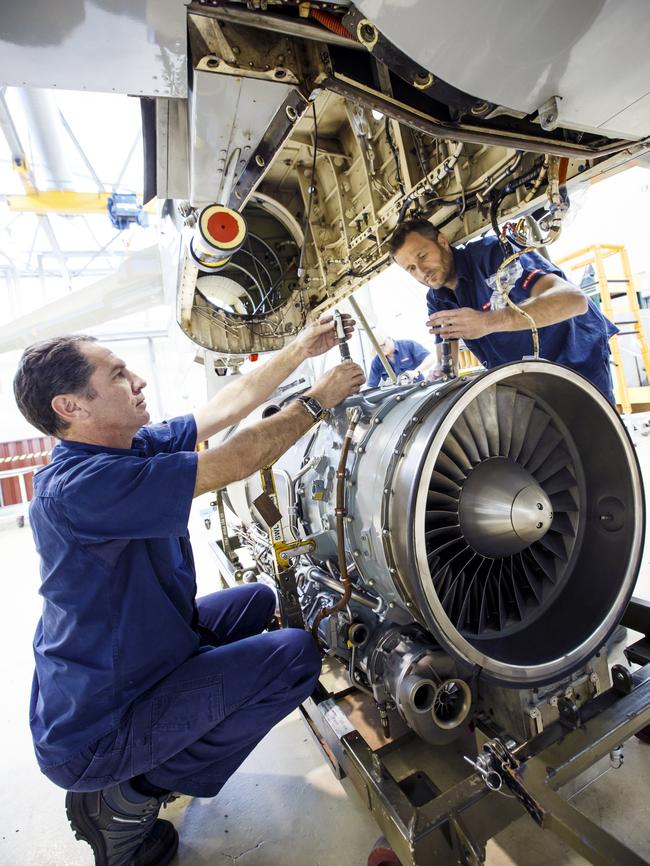F-35 Joint Strike Fighters will create jobs bonanza
Aviation engineers and white-collar defence workers will be in demand with the arrival of the RAAF’s F-35 fighters.

Aviation engineers and white-collar defence workers will be in demand in the next five years with the new F-35 Joint Strike Fighters arriving and the current batch of F/A-18 Hornets and Hawk 127 training aircraft being upgraded.
Much of the $17.8 billion F-35 program will be based at BAE Systems Williamtown hangars near Newcastle, NSW, boosting regional employment. Each of the 72 F-35 aircraft bound for Australia will contain local components — with BAE and partners having secured more than $680 million in contracts — plus additional spending on training course development, engineering support and regional maintenance.
In recent months US military testing has identified dozens of problems with the F-35s, including minor structural flaws, software and weapon sight glitches, humidity issues and the connectivity of laptops used for maintenance, and Australia’s Defence Department has confirmed some issues may not be resolved until 2022. But Defence Industry Minister Christopher Pyne has dismissed these concerns and praised the project as a jobs generator.
A PricewaterhouseCoopers economic impact report released in February estimates 5000 jobs will be created on support and regional maintenance by 2023 and 6300 jobs by 2038. At Williamtown, BAE will employ 200 extra people as the fifth-generation fighter project expands.

BAE’s F-35 project manager Andrew Gresham says upgrades are under way on the Hawk trainers, which will allow prospective F-35 pilots to train on an identical system. The systems must work together — the Hawk lead-in fighter is a BAE jet, the F-35 is made by Lockheed Martin and the Hornet is a Boeing — with BAE ensuring software and hardware are compatible.
Gresham says work will increase on the regional airframe sustainment program, which also will involve any Asia-Pacific country that buys F-35s bringing them here for maintenance, repairs, overhauls and upgrades.
“What Australia is buying into is not just 72 aircraft, it’s a program of modernisation and capabilities for about 30 years,” Gresham says.
“F-35s into the future will be the primary fighting aircraft in Australia, working in a mix of Super Hornets and maybe remote-piloted aircraft, but it will be the centrepiece going forward.”
Aerospace director Steve Drury says it will take several years to build the workforce once the F-35s arrive, with maintenance, repairs and overhauls not needed immediately.
“This fifth-generation jet is coming with an idea of global support and we’ve never operated like that before,” Drury says. “We’ve maintained a high standard for the Hornets and Hawks, and we’ll build up the same standard for the F-35s, and it’s people who are going to do that.”
Drury is looking for specialist engineering skills, with BAE working with schools and tertiary institutions in Newcastle for the past decade to encourage students to consider aerospace careers.

Two years ago the company started working with Robo Girls, which encourages primary school girls to study sciences. BAE also has been involved in job pitch sessions with the CSIRO’s Data61, Ribit and other companies, matching masters and PhD students to industries and roles.
“Defence has been a very traditionally innovative area; the internet was born out of defence, and GPS,” Ribit director Liz Jakubowski says. “Innovation happens in that space.”
Other project partners are working with BAE on the F-35, including Rockwell Collins, Northrop Grumman, GE and Ruag Australia. Rockwell Collins Australia has several projects under way or planned, including the development of the Generation III helmet worn by F-35 pilots. The smart helmets feature visor displays and X-ray technology and up to 280 will be custom-made.
Australian managing director Nick Gibbs says the optics specialist also is making lenses with a spherical view for the F-35 camera system, the lens display on the helmet and the projectors within the pilots’ training dome, providing a near-360 degree simulated view of what they will see in flight.
Across technology platforms and with maintenance, repairs and upgrades, Rockwell Collins is likely to employ an extra 30 people in the next five years at Williamtown and in Sydney.
“The F-35 has been a catalyst for companies to bring new technology, new manufacturing capabilities into Australia,” Gibbs says.
“It’s one of these leading-edge transformational programs that allows defence to step up to the next generation of technology.”
GE makes a range of electrical power and avionics systems for the F-35 and will be working on the global sustainment program, and maintenance on GE engines in the Hornet, Super Hornet, KC-30A tanker and Wedgetail airborne early warning and control aircraft.
“(The F-35 program) further strengthens Australia’s aviation sector and is evidence of the expertise across the industry here,” says David Mahoney, GE’s Asia-Pacific aviation director of military business.
“Once our maintenance, repair, overhaul and upgrade capability for F-35 systems has been established in Williamtown, not only will we be undertaking systems (maintenance, repair, overhaul and upgrade) work for our Asia-Pacific neighbours, we will also be allowed to compete for systems work from F-35 aircraft operating out of Europe and the US.”
GE employs about 2000 people in Australia with numbers likely to increase. Jobs growth from the JSF program will spread among 32 businesses nationally, Pyne says, sharing $85m worth of contracts so far. “In terms of jobs, these investments will last a long time beyond the build phase of the Joint Strike Fighter program,” Pyne says. “That’s why the value rises from $800m to $5bn by the mid-2020s, not just in the build but being the hub for maintenance and sustainment.”
Victorian companies have won 64 per cent of the contracts so far, NSW has won 13 per cent, South Australia and Queensland have won 9 per cent each, and Western Australia 3 per cent.
Pyne says the great positive has been watching automotive and other industrial companies adapt to defence needs and tender for international work. Each international F-35 will contain Australian components, plus training courseware, engineering support and regional maintenance.
Verity Edwards visited Williamtown as a guest of BAE Systems Australia.


